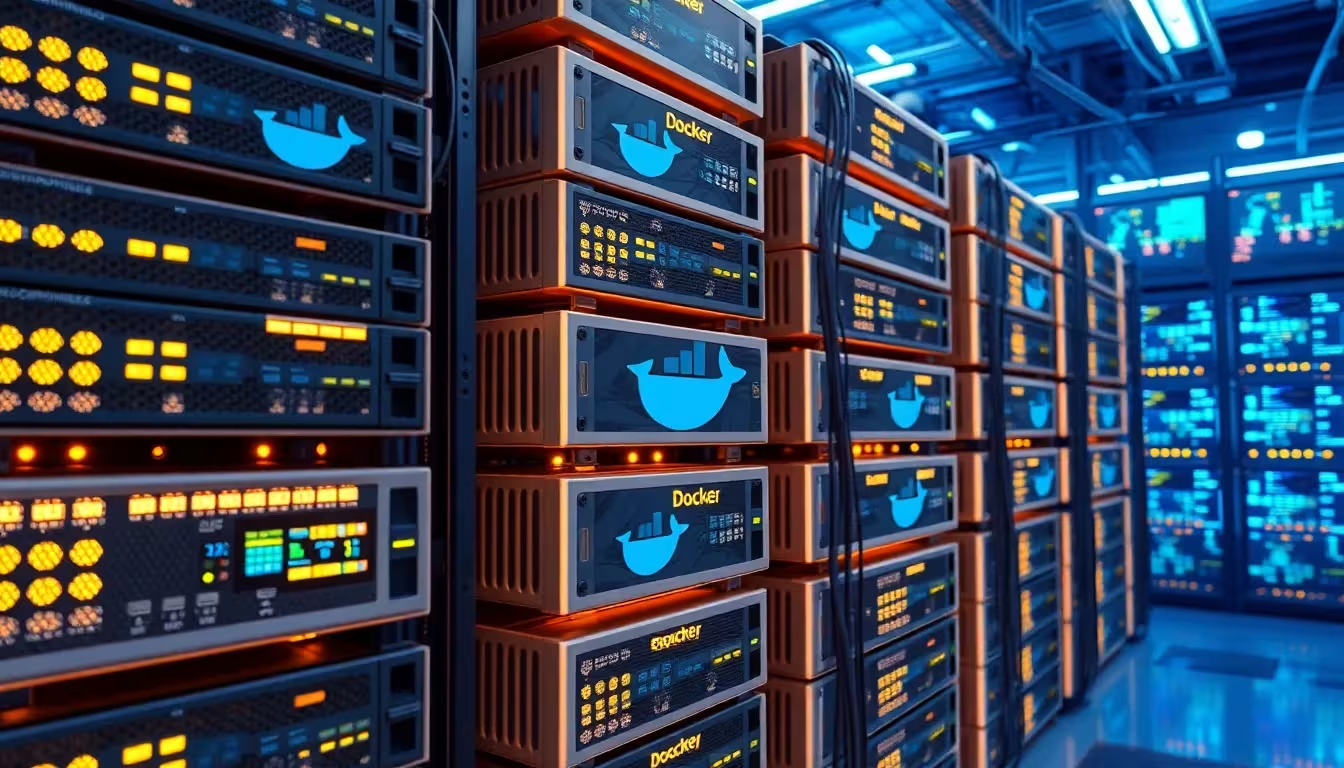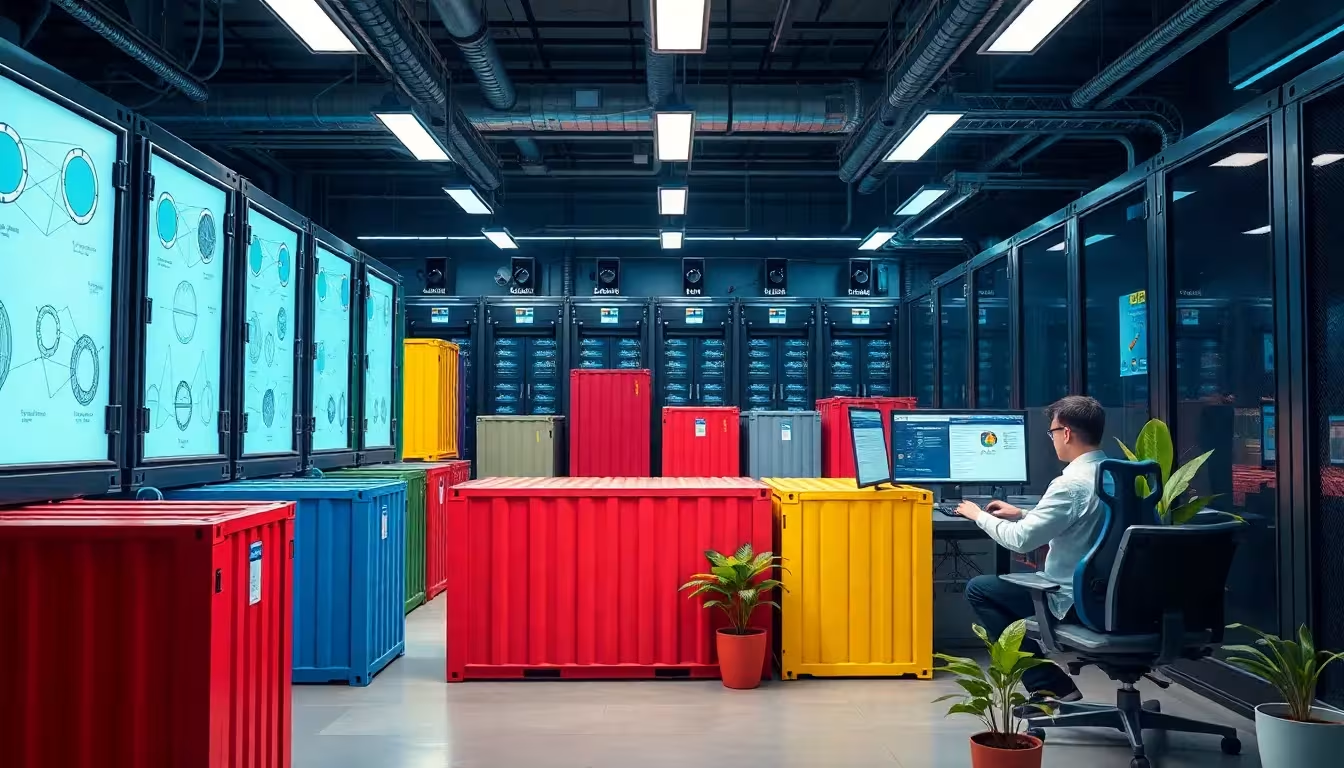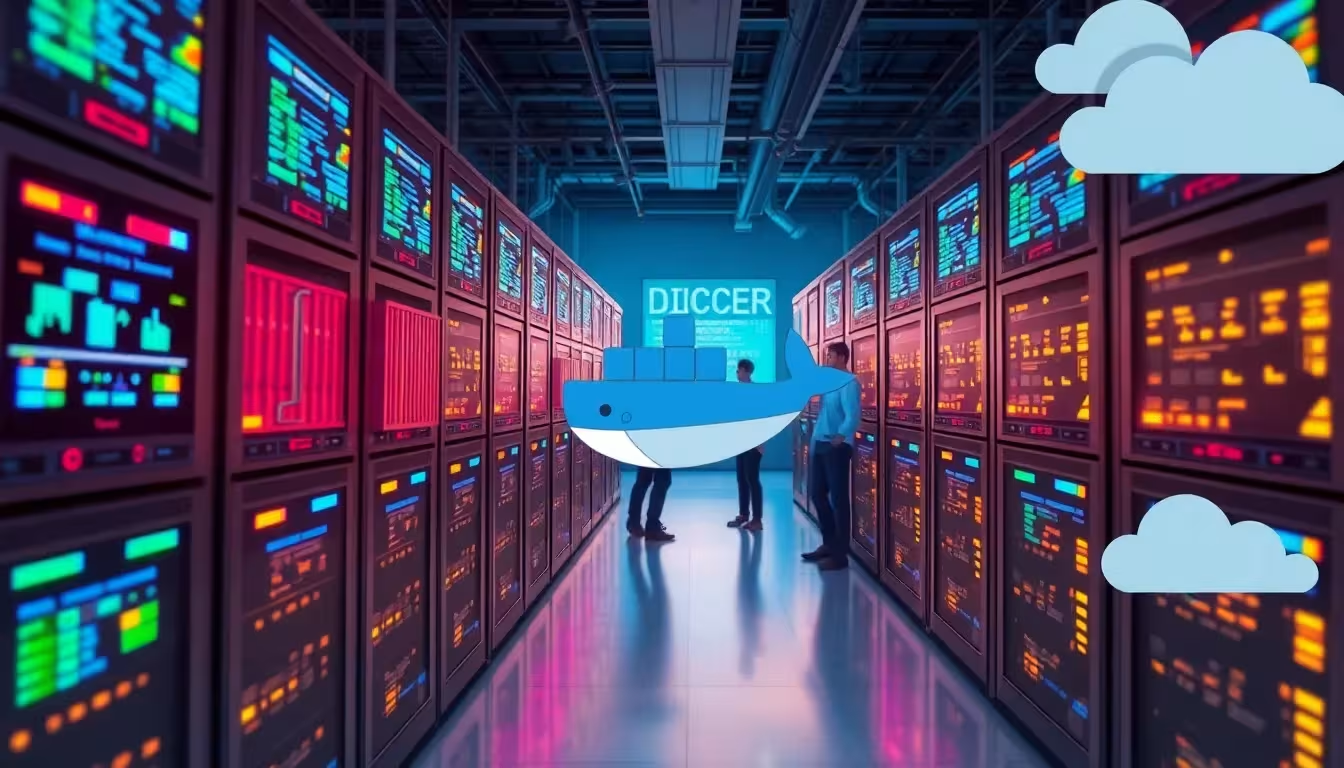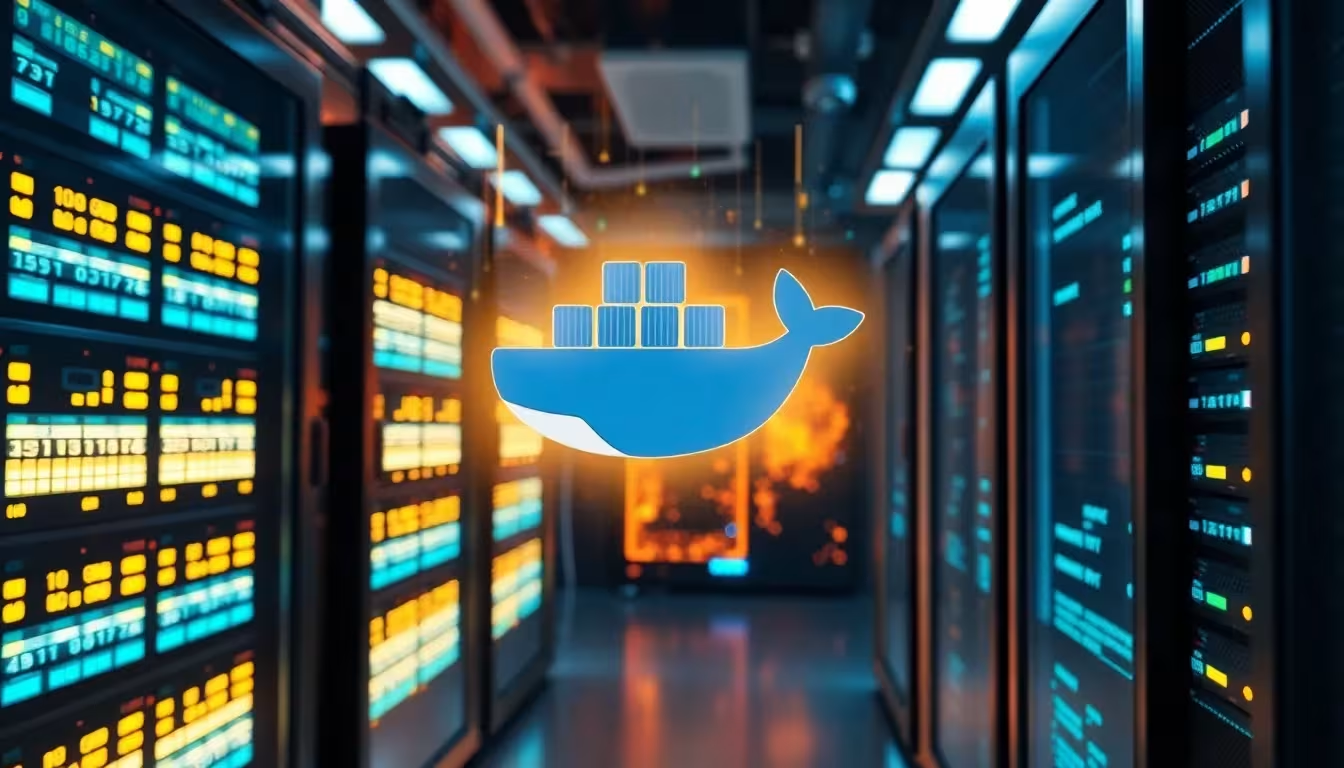Docker hosting has become an integral part of modern IT infrastructures. The technology scores with high flexibility, efficient resource consumption and enables simple scaling for demanding web projects.
Key points
- Containerization provides isolated environments for applications, which avoids conflicts.
- Flexibility in application provisioning and resource allocation.
- Scalability through container orchestration with tools such as Kubernetes.
- Security through clear demarcations, but with consideration for kernel sharing.
- Data management and monitoring require additional tools and strategies.

What Docker containers do technically
A Docker container is essentially a lightweight, isolated runtime module that contains everything an application needs to run. Unlike virtual machines, containers require Fewer resourcesas they share the same kernel of the host system. This design makes containers particularly boot-friendly and memory-efficient. At the same time, the portability of applications is considerably simplified, as each container has its own entire runtime environment brings along.
The underlying virtualization at operating system level ensures that no complete guest operating system needs to be emulated. This reduces hardware requirements and boosts performance while maintaining the same application structure.
Docker hosting for developers and companies
At Development process Docker allows different software stacks to be tested in parallel. Developers can thus experiment flexibly with programming languages, frameworks or database systems without changing their main environment. Hosting providers also benefit: Multiple customer environments can be operated efficiently and in isolation on one server.
For companies, Docker hosting means a reduction in operating costs through Optimized use of resources. Containers also impress with their ability to scale quickly - either through the use of additional containers or through targeted load balancing via license-free tools such as Kubernetes, as this Comparison Docker vs. Kubernetes shows.

Security: opportunities and limits
Containers offer a certain degree of compartmentalization, but they share the same kernel. A targeted attack can spread to the host system without correctly configured rights assignment. It is therefore essential to only use official Docker images and to regularly check for updates.
An important protection mechanism is the "least privilege" principle. Containers should only have the minimum rights required to perform their tasks. In addition, security is significantly improved when containers run on dedicated user groups and restricted network zones.
Advanced security concepts
Especially for productive installations, the strength of a container solution also depends on its security architecture. In addition to the principle of minimal rights assignment, the use of Security scans for Docker images that detect vulnerabilities within the operating system and the installed packages. This reduces potential gateways before the containers are even running. Many companies also rely on signed Docker images to ensure the integrity and origin of the image.
Another important topic is user management. With tools such as Docker Secrets, passwords and configuration data can be stored and managed in encrypted form. Strict separation between the build and runtime environment also prevents sensitive access data from accidentally ending up in the final image. Together with network segmentation (e.g. via host network and individual bridged networks) and a coordinated firewall concept, an additional layer of protection is created for productive container installations.
In the multi-tenant area, where several customer containers share the same physical host, the security architecture should be checked all the more closely. A host that houses highly sensitive code or data requires intensive hardening measures such as kernel patch management, regular log evaluations and a sophisticated intrusion detection system.

Persistent storage for stateless containers
As a container is always classified as a "stateless", all data that has not been backed up will be lost when the system is restarted. Databases, caches or files must therefore be moved to separate storage solutions - either via volumes or external storage systems such as NFS or S3-compatible cloud storage.
The following table shows a comparison of common storage solutions:
| Storage solution | Advantage | Disadvantage |
|---|---|---|
| Docker Volume | Simple integration | No built-in backup |
| NFS | Network-compatible | Can slow down under high load |
| S3-compatible memory | Highly scalable | Requires additional configuration |
In addition to the choice of suitable storage, a consistent backup strategy is drastically important. Containers that are designed to be temporary or stateless can also store sensitive data temporarily. Whether daily snapshots via NFS or automated incremental backups for cloud storage - a clear concept should be developed as early as the planning phase. In high-availability applications in particular, failover mechanisms and replication must also be planned so that the application continues to run if a storage node fails.

Monitoring and orchestration
Functioning monitoring is the key to the efficient operation of container environments. Standard tools such as top, htop or ps are not sufficient for Docker hosting. Instead, you need tools such as Prometheus, Grafana or cAdvisor to permanently monitor container resources.
There is also the question of how containers are managed automatically. With Docker Swarm or Kubernetes, containers can be managed dynamically. orchestrate. These systems monitor the status of each container and automatically restart instances if necessary.
Container management in everyday practice
In the ongoing operation of larger container setups, the question quickly arises as to the Automation. While manually starting individual containers on development systems is still practicable, a productive infrastructure usually requires flexible solutions for deployment. This is where tools such as Docker Compose which define multiple containers and their dependencies in a single YAML file.
In more extensive scenarios, there is often no way around Kubernetes, which offers additional features such as Service Discovery, Ingress Management and Rollout strategies offers. Rolling updates, blue-green deployments or canary releases can be implemented without major manual intervention. A clear separation between development, test and production environments is important here so that new versions can be reliably verified before they go into regular operation.
The topic Logging is becoming increasingly important in larger environments. With microservices structures in particular, it is worth introducing centralized log management, for example via ELK Stack (Elasticsearch, Logstash, Kibana). This allows you to maintain an overview of error patterns and performance drops even with numerous containers. This saves time when troubleshooting and prevents failures.
What is important when integrating into existing systems
Before I implement Docker, I need to check whether my infrastructure meets the requirements. Above all, it is important to adapt the network: Docker works with its own network bridges, which must be coordinated with compatible firewalls and DNS systems. Without this coordination, there is a risk of security gaps or functional failures.
Existing storage systems or backup strategies must also be adapted to container operation. This article provides a good basis for this Efficiency through container technology in web hosting.
Containerization and multi-tenant capability
Customer systems running in parallel require stable separation. Docker offers so-called Namespaces (namespaces), with which processes, networks and file systems are operated in isolation. In conjunction with control groups (cgroups), resources such as RAM and CPU can be limited per container.
This allows hosting providers to segment services efficiently without containers influencing each other. A more detailed explanation can be found in our article on Isolated hosting environments with containers.
DevOps and CI/CD pipelines
Docker can fully exploit its strengths, especially in develop-operate structures (DevOps). With continuous integration and deployment processes (CI/CD), every code change is automatically integrated into containers, tested and rolled out into a staging or production environment. Tools such as Jenkins, GitLab CI or GitHub Actions support these processes and integrate Docker into the build process.
A sophisticated CI/CD pipeline ensures that the changes defined in the code result directly in a new container image. Defined tests and quality gates can then be used to decide whether the image is ready for production. Only when all checks have been passed does the image move to the registry and is ready for rollout - either manually by an operator pressing the final button or fully automatically. This clear separation between build, test and release phase minimizes failures and increases software quality.

Best practices for continuous operation
While configurations are easy to keep track of at the start of a project, bottlenecks often become apparent during operation. Containers should be regularly checked and rebuilt to prevent "image red" - i.e. outdated software versions. Automated CI/CD pipelines help to speed up and standardize these processes.
In addition, the use of infrastructure-as-code tools such as Terraform or Ansible is recommended to keep infrastructure definitions versioned and traceable. This allows me to retain control over my container architecture in the long term.
Microservices architectures
In many cases, Docker is the key to implementing microservices in practice. Instead of a monolithic application, various services - such as database, authentication, front end and caching - are divided into separate containers. Each microservice has its own, clearly defined area of responsibility and can be further developed or scaled independently of the others.
When operating microservices, Docker offers the encapsulating nature of the containers: Differences in runtime environments are reduced and new services can be integrated without major conversion measures. At the same time, however, the need for orchestrated management increases: more services not only means more containers, but also more network routes, more monitoring targets and more infrastructure complexity. Tools such as Kubernetes allow these microservices to be operated in clusters, where functions such as auto-healing, automatic scaling up and down or rolling updates significantly reduce the development and maintenance effort.

Findings and practical benefits
Docker hosting is particularly suitable for dynamic projects with clear requirements for mobility, testability and resource control. The advantages in terms of speed and scaling are obvious. However, a well-founded setup is required for containers to be operated sensibly. Suitable tools are needed for storage, deployment and monitoring.
This gives companies the opportunity to operate services securely, efficiently and modularly - especially when existing hosting structures are modernized or restructured.



